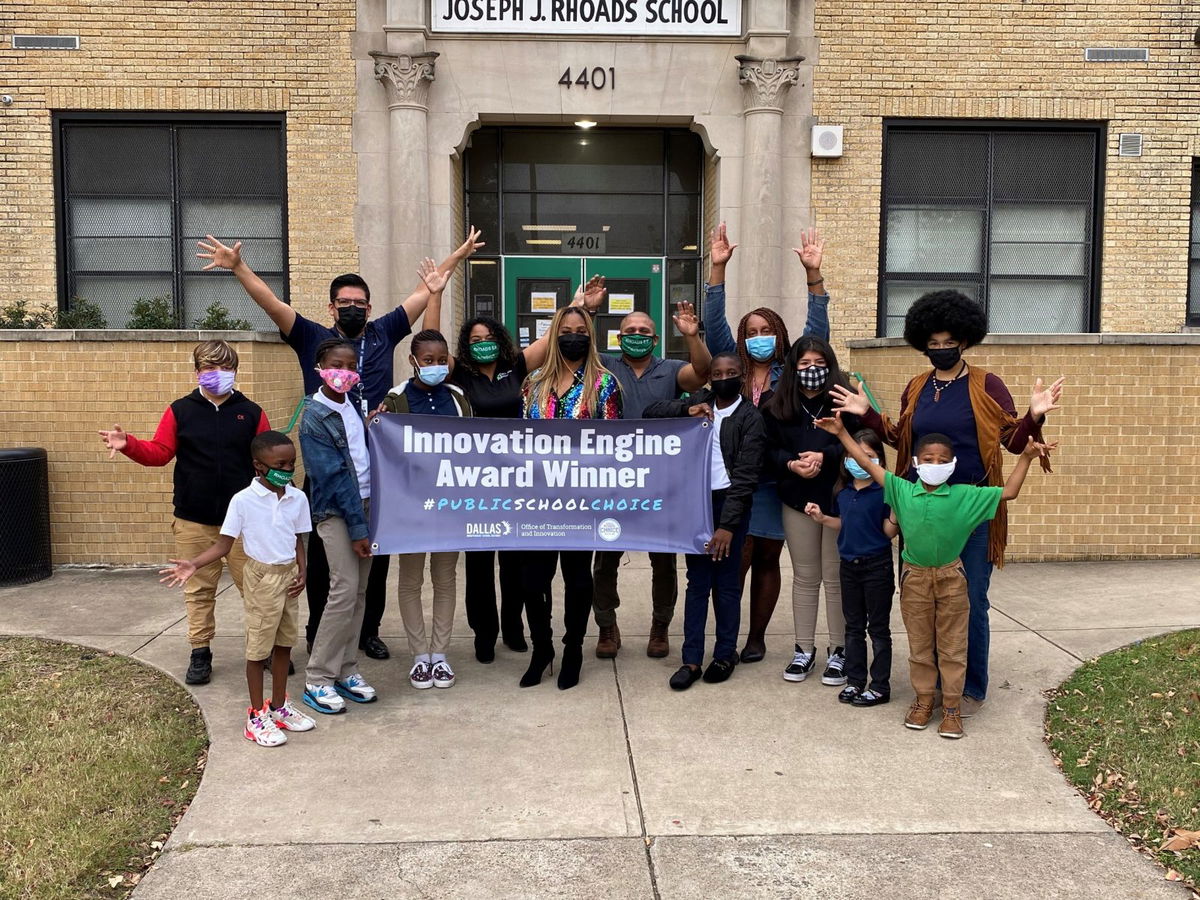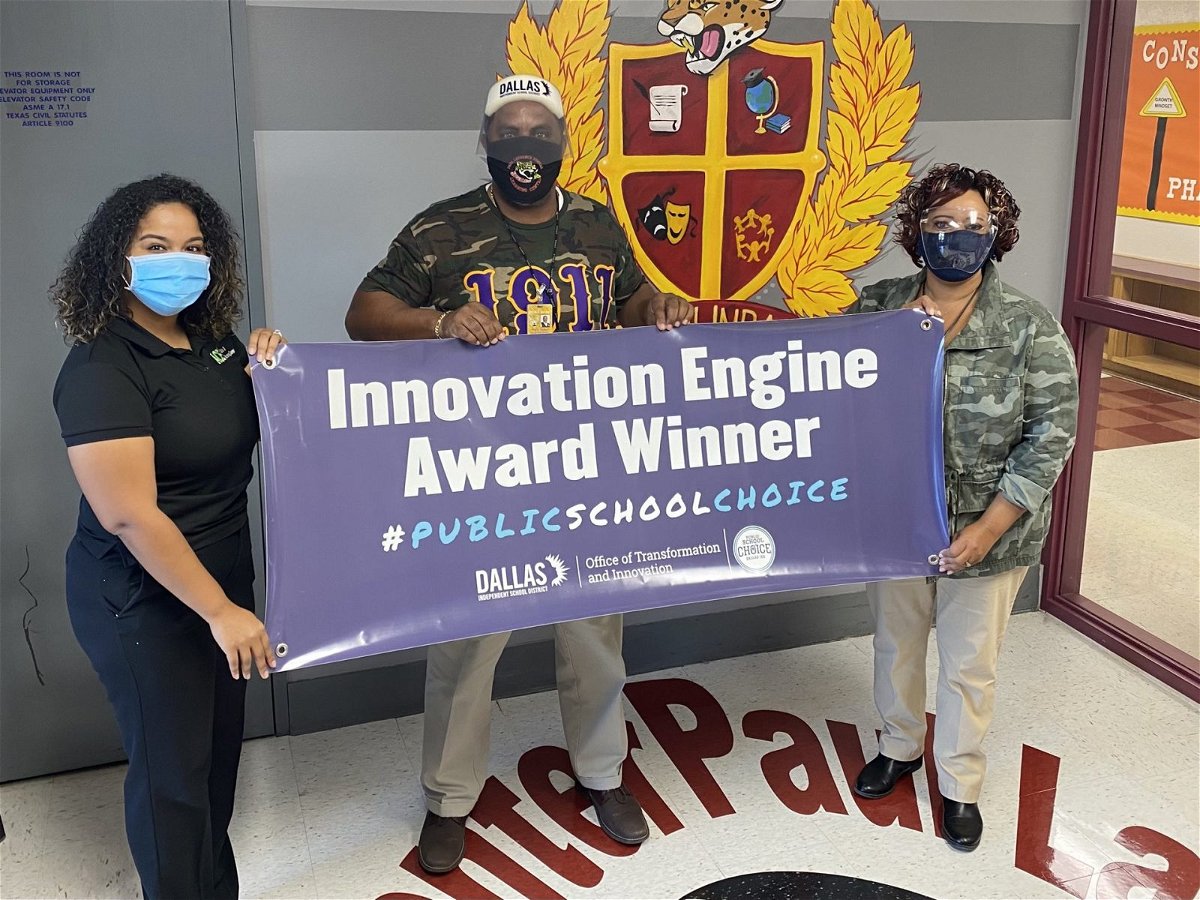When the new H.S. Thompson campus opens this fall in the Bonton neighborhood of South Dallas, stories of the school will be told by students, thanks to a $50,000 grant that designates Thompson as one of Dallas ISD’s “innovation” schools.
Thompson is one of 21 schools in Dallas ISD that received a $50,000 grant for the 2021-2022 school year as part of a Dallas ISD Office of Transformation and Innovation grant program. The funds are aimed at helping increase school choice by allowing neighborhood schools to implement programming that will support innovation in areas including leadership, new technology, personal learning, theater arts, international baccalaureate, STEM and STEAM (science, technology, engineering, arts and math).

Thompson is currently under construction at its former site on Bexar Street and Bethurum Avenue. It will open in fall 2021 and absorb kindergarten through fifth-grade students from Joseph J. Rhoads when Rhoads transitions to an early learning center for pre-K through second-grade students. Thompson will use its $50,000 to create a media club where a “principal’s elite team” of fourth- and fifth-grade students produce a live broadcast program as part of the school’s STEAM innovation plan.
Students will meet in the mornings and after school, where they will learn to work with broadcast equipment, interview fellow students and school leaders, and research and write broadcast scripts as part of the club, H.S. Thompson principal Crystal Owens says.
Thompson also will house a makerspace so students of all grade levels can be exposed to the media club. The program is being implemented at Rhoads now and will transition to Thompson when students make the move to the new campus in August, Owens says.
Rhoads leaders conducted surveys to assess need in the school and determine what they would want to focus grant funds on before applying. School leadership felt a program like the media club would allow students to practice a diverse set of hands-on skills that would serve them in the future and encompass elements of science, technology, engineering, arts and math, Owens says.
“Working with STEAM just gives us a better opportunity — we’re exposed to a lot of innovative ideas that we would like to bring to our campus, and we wanted to make it STEAM so that we can include the arts as well,” Owens says.
The program also will allow for better community engagement, allowing students to interview community stakeholders and for broadcasts to be streamed by parents on social media, Owens says.

At Paul L. Dunbar Learning Center, located near Fair Park, grant funds will support science, technology, engineering and math programming, according to the school’s grant application. Students will receive hands-on experience with robotics, Lego robotics and coding, and participate in district and county science fairs as part of the initiative.
Programming also will include technological upgrades and other experiential learning opportunities for Dunbar students, principal Alpher Garrett-Jones says.
“We are absolutely trying to make sure that we have the opportunity for the children to have more of the hands-on experiences beyond the classroom,” Garrett-Jones says.
A big part of helping create those experiences for students is establishing community partnerships, Garrett-Jones says. For example, Fair Park is “right around the corner,” she says. Students will plant flowers and vegetables in a plot of land in front of the campus as part of a partnership with Fair Park Horticulture, and Dunbar is partnering with the Fair Park agricultural department to teach students to care for animals.
Dunbar leaders plan to implement STEM programming for students at all grade levels, which Garrett-Jones said expressed interest in the sciences in schoolwide surveys.
The program could have long-term positives for Dunbar students in particular. Black students historically have been underrepresented in STEM, dropping out of STEM programs at a higher rate than their white counterparts. A 2009 survey by Sandra Hanson found that although African American girls showed more interest in science compared to white female students, only 66% said they felt welcome in the field, and more saw race as a barrier. Almost half of all STEM occupations are held by white men, according to data from the National Science Foundation. More than 70% of Dunbar students are African American, so the programming could give them a chance to see themselves in the sciences well before they enter the workforce.
“We really want them to realize that your job should be something that is just second nature, and it’s something that you enjoy,” Garrett-Jones says. “We’re trying to really give them that opportunity to know that you don’t have to just always go down those same paths of what has always been stated, because times are changing, and more than anything, you want them to be able to compete in a global society.”
If students’ excitement is any indication, Dunbar could be getting closer to that goal.
“Some students try to bypass their schedule and continuously go on to the robotics and other sciences,” Garrett-Jones says, laughing. “It’s absolutely a joy to see that each time they come to class.”
This story was co-published by our media partner, the Dallas Weekly.

Leave a Reply